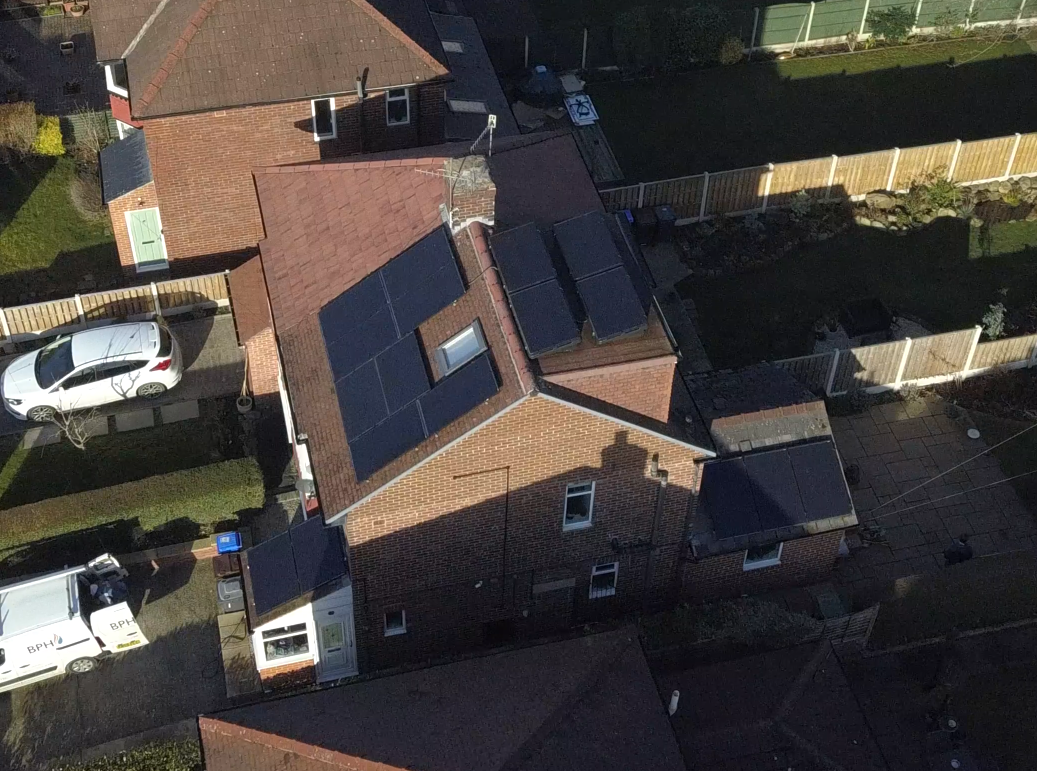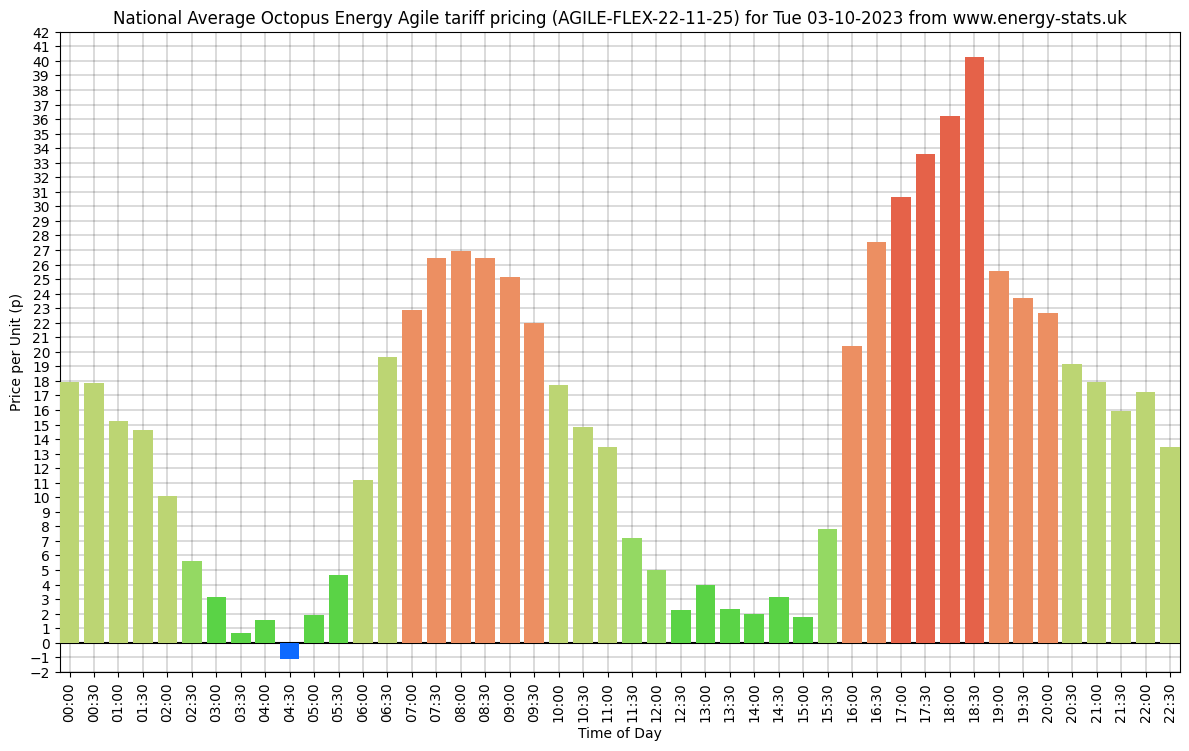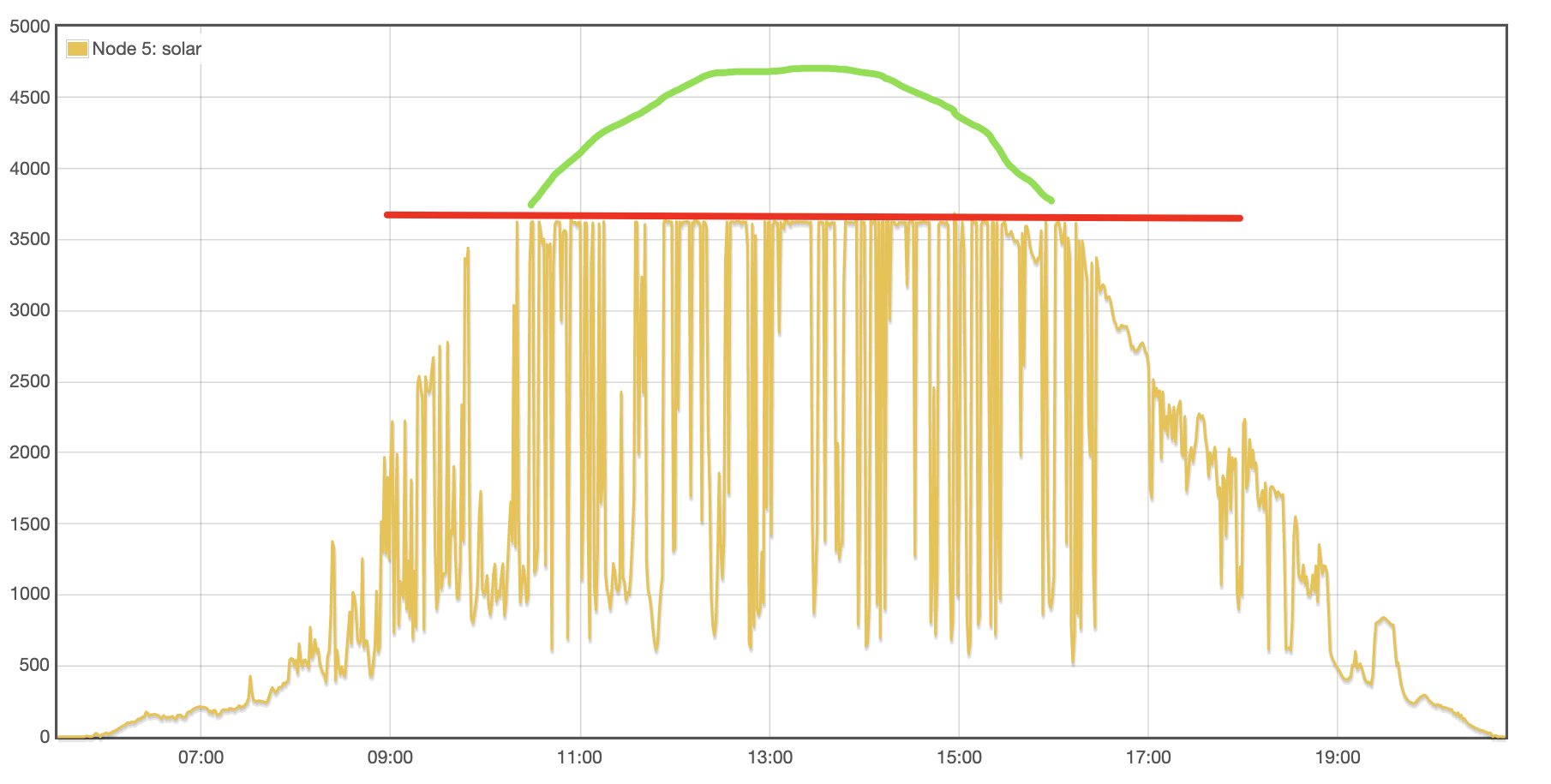5 Years with Solar PV
As described in the dedicated My Solar PV blog article I had my system installed in September 2018. Which means we have come up on 5 years of solar ownership.
I thought this landmark would be a good time to look back at the installation, how it has performed along with some thoughts, regrets and recommendations for those of you considering solar yourself.
Read on for 5 years of Solar PV.
Installation Summary
- 17 x 300W JA Solar panels (total 5.1 kW capacity)
- 17 x Solar Edge power optimisers (1 per panel)
- 3.68 kW Solar Edge inverter
Here is an aerial drone photo of our house showing all the different panels.

You can find full details about all the different angles and directions the panels point in the My Solar PV article, so I won’t repeat all that again here.
Although I do allow myself a wry smile when I see folks having systems put in with 400W and 420W panels these days. That could have given me over 2 kW more capacity!!! That would be a 7kW system!!! What!!!
System Performance
In a word – brilliant!
I’ve broken the whole 5 years down month by month over in the generation article.
https://energy-stats.uk/solar-generation-history/
Full monitoring of the system using Open Energy Monitor started in November 2018, so these stats start from there
Generation Totals
So this is the 5 full years from the start of November 2018 to the end of October 2023.
- 2018 – 199 kWh (November and December only)
- 2019 – 4244 kWh
- 2020 – 4324 kWh
- 2021 – 4151 kWh
- 2022 – 4419 kWh
- 2023 – 3857 kWh (January to October only)
So pretty consistent year on year. What’s a few 100 kWh across 365 days?
21,194 kWh generated in total.
What’s that amount of electricity worth in pounds and pence?
- 2018 – 199 x 15p = £30 (November and December only)
- 2019 – 4244 x 15p = £637
- 2020 – 4324 x 15p = £649
- 2021 – 4151 x 25p = £1038
- 2022 – 4419 x 34p = £1502
- 2023 – 3857 x 34p = £1311 (January to end of October only)
So from a purely generated energy at yearly going rate, that’s £5167 of electric.
In generated electricity money alone, my system will have paid for itself in just one more year.
Now granted, I didn’t use all of that over the 5 years. But as time has gone on, I’ve tried to use as much of what I’ve generated.
Note: I’ve not included any money here for the surplus energy sent back to the grid. We’ll get to that in the next section.
Should you export electricity back to the grid or use it yourself?
Here’s how much I have exported back to the grid across the 5 years. Both in total kWh and also as a percentage of what was generated that year.
- 2018 – 97 kWh (48%)
- 2019 – 2881 kWh (68%)
- 2020 – 1517 kWh (35%)
- 2021 – 518 kWh (12%)
- 2022 – 483 kWh (11%)
- 2023 – 301 kWh (8%)
You can see that in the first full year, 2019, I sent a shed load of solar back to the grid, over 2800 kWh.
Quick aside, if I could have theoretically sent all that back 2818 kWh back to Octopus at 15p that would have earned me £432. More on export options shortly.
As the years went on I tried to halt that exports slide by using more and more in the house.
This was possible as we purchased more and more electric devices.
Here’s a list of the investments made
- Feb 2020 – Installed 4.8kWh Lux and Pylontech battery system (2 batteries)
- Aug 2020 – Took delivery of EV and installed Myenergi Zappi Charger
- Oct 2020 – Installed a third battery taking total capacity to 7.2kWh
- Feb 2021 – Installed a further two batteries taking total capacity to 12kWh
- Feb 2022 – Mixergy water cylinder installed and myenergi Eddi PV diverter
- Oct 2022 – Vaillant Arotherm 5kW heat pump installed
- Nov 2022 – Pylontech batteries replaced with Hanchu models
- Aug 2023 – Expanded battery system to 16kWh usable capacity
Most of these investments have their own article which you can find over in the blog summary.
https://energy-stats.uk/blog-summary/
In summary, having somewhere to dump the excess solar (batteries, water cylinder, EV and running the heat pump) ensured I used more of what I generated.
Up until 2023 my advice was always that it was better to use what you generated in the house than send it back to the grid. This was because the amount you were paid for exporting back to the grid was somewhat paltry.
But with Octopus now offering a plethora of tempting options I think you have to consider all these export options.
At the time of writing (November 2023) you can get 15p per unit on most tariffs, except their Go tariff (which is limited to 8p exports) and up to a whopping 32p at certain times of the day on Octopus Flux tariff.
You can find out about and compare outgoing/export prices on the following pages
https://energy-stats.uk/octopus-agile-outgoing-export-southern-england/
Part of my desire to use all I can is that I’m on the old FIT (feed in tariff) terms, where I get 6p per unit for 50% of what I generate, called deemed exports. So I’m better off using as much as I can.
Note: any exports back to Octopus are “actual” exports, so you only get paid for what you send back to the grid. Unlike the old 50% deemed exports.
Any new solar installations can only get “actual” exports. Deemed export is no longer available.
The 15p export option makes the whole solar payback / return on investment even more compelling.
So as well as the energy you are not having to buy, that you can store with batteries, you can now sell excess back to the grid for a decent amount.
Are Solar diverters worth it?
I have both the myenergi Eddi water cylinder diverter and myenergi Zappi EV charger so have a bit of experience here.
Just like the export / self use section, my views on solar diverters have radically changed in recent months. This is again, purely from the financial changes of the newly available export tariffs.
If you have an EV and you can charge it overnight at 7.5p on Intelligent Go and then get 15p for each unit of surplus solar by selling it back to the grid. Why would you want to divert that surplus to your car?
Similarly, if you have a solar diverter like an Eddi hooked up to your water cylinder you might be better off heating that on an overnight tariff and selling the surplus for 15p.
If you have a heat pump, there’s close to zero reasons why you would need a water cylinder diverter. This is because you could get anyway where between 300% and 400% efficiency from the heat pump during the spring/summer and autumn. So surely better to heat the water at a 1:3 ratio and sell the surplus back at 15p?
Remember, the immersion in your water cylinder is only 100% efficient. 1kW of electrical input equals 1kW of heat output.
You can see the performance of my heat pump here:
https://energy-stats.uk/heat-pump-performance-history/
What about Batteries?
Look at this day on the Agile tariff from 3rd October 2023.
What a perfect profile for battery owners. Fill up overnight on the cheaper electricity, ride through breakfast on stored energy.
Then either fill up using daytime solar, or do a cheeky grid top up before 4pm to ensure you can get through the early evening expensive peak.

So these new export rates has me thinking is that if you can fill the battery at a cheap rate overnight at say 8p per unit (or cheaper on certain Agile days), then you can sell all your solar surplus at 15p?
But the “is it worth it question” is probably not quite as straightforward as that.
Gary from the Gary Does Solar YouTube channel has a number of videos on Battery ROI that are worth taking a look at.
https://www.youtube.com/watch?v=DCAMDeA00vM&ab_channel=GaryDoesSolar
Personally I bloody love my batteries. I charge them from the solar in the summer and I fill them via the cheaper overnight tariff in the winter.
In the year between November 1st 2022 and October 31st 2023 a whopping 91% of the electricity I purchased was off peak. This meant the average import price for all the electricity I bought was just 14p per unit.
This would not have been possible without the batteries.
Battery Charge and Discharge Rates
My Lux AC battery inverter can charge the batteries at 3.6kW and can supply 3.6kW to the house when required.
I did some comprehensive charge / discharge testing in this blog post.
And for most of the past few years 3.6kW in and 3.6kW out has been fine.
But as I have gradually moved to ‘everything electric’ the 3.6kW available to cover the house load as started to be a concern.
Getting the electric induction cooker has been the real tipping point though. Put 2 rings on and the main oven and you are definitely going past 3kW and that’s without the heat pump and the rest of the house.
So when choosing a battery storage, be very aware of the charge and discharge rates it is capable of. If possible, try to get something than can cover 5kW+ into the house.
There is no point have the batteries 100% full, but you still have to pull from the grid because the house needs more than what the batteries can supply.
Regrets, I’ve had a few!
Well, not quite a few, just one really; I should have gone with a bigger solar system from the outset.
5 years ago I never anticipated a world where we would own an EV and a heat pump.
As you saw from the first year exports, we sent almost 70% of that back to the grid back then.
One of the original proposals I was given was for 17 x 320W panels (5.44kWh) on a 5 kW inverter.
This is the one I should have gone for. It’s not so much the panel sizes, but the inverter.
My 5.1kW of panels on a 3.68kW inverter has ended up too much of a squeeze where I end up clipping for over 6 months of the year.
What is Clipping?
Solar inverter clipping happens when solar panels provide more power than an inverter can handle. So in my case, the 5.1kW of panels produce more than the 3.68kW limit of my inverter.

In this example you can see where my system ‘clips’ for most of the day, constantly banging up against the limit of my 3.68kW inverter (red line).
The system could easily have generated up to the imaginary green line if it had the inverter to do so, like a 5kW for example.
We generated 25kWh on this day pictured. I wonder how much the clipping cost us?
Image courtesy of my Open Energy Monitoring system.
A small amount of clipping, ie a 4kW of panels on a 3.68kW is probably ok, especially if there’s a chance of panels being in shade or you have panels on different aspects.
Your installer should be able to run simulations to show your forecasts. Be sure to ask the question though if you’re presented with a 3.68kW. The installer may just want an easy life and not want to contact the DNO for you.
My recommendations if thinking of getting Solar PV.
GO BIG!
No one that has had solar installed as ever said “I put too much solar on my roof”.
In most cases your solar installation is a one off event and much of the cost is the scaffold and the installation itself.
So if you can, fill every roof, go for the biggest panels and the biggest inverter.
If you want to put a bigger system in, you will almost certainly need to speak to your local DNO (district network operator) for approval, but it will be worth it in the long run.
Note: for any system with an inverter bigger than 3.68kW your installer will need to contact your DNO for pre-approval.
This is why I ended with 5.1kW of panels on a 3.68kW inverter (instead of a 5kW inverter).
I was told it could take a while for the approval for the bigger inverter, so I didn’t. For the sake of adding 6 weeks to the install, I should have waited.
Any system with an inverter sized 3.68kW or less goes through a very straightforward “connect and notify” process. Ie, the DNO doesn’t ask any questions.
Remember the battery charge and discharge limit note above. If you’re going batteries, aim for as big a charge/discharge rate you can (or your DNO allows).
Final Thoughts
I love my solar install, it’s amazing and bizarrely I have so much to thank it for.
When it was installed I had no real idea what a kWh was or unit pricing!! I just paid my gas and electric bills like everyone else.
It was the start of a massive renewable journey for me. Solar was the gateway drug that led me to everything else I’ve done to date.
And now the holy trinity of Solar, Batteries and Heat Pump.
If it wasn’t for having solar installed I doubt i’d have ended up discovering the original Octopus Energy Agile tariff or creating this whole website.
If you decide to go solar (and why won’t you?), I hope you get as much joy out of it as I do mine.
Referral information and free credit offer
If you find Energy Stats UK useful, there are a couple of easy ways to support the site and help cover hosting and server costs.
Thinking about switching energy suppliers?
Homeowners who join Octopus Energy using my referral link get £50 free credit after signing up. Business users get £100 free credit, and if you’re looking at solar or a heat pump, there’s also a £100 gift card through Octopus Tech.
Or, if you just want to say thanks, you can buy me a coffee.
You can also see more ways to support the site here via the likes of Plusnet broadband, Smarty Mobile, Havenwise remote heat pump control, Hetzner Cloud hosting and more.
Follow @energystatsuk on Twitter / X, Bluesky and Mastodon for daily tariff graphs and updates.
Note: The current and past performance of energy pricing is not necessarily a guide to the future.



